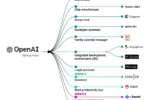As we delve into banking news January 2024, several significant developments are shaping the financial landscape. The Federal Deposit Insurance Corp. is poised to implement the Synapse Rule, which will impose stricter regulations on banks and fintech partnerships. Meanwhile, Regions Bank is taking bold steps toward an open banking future, leveraging technology to enhance data sharing capabilities. The recent Capital One outage has raised pressing questions about third-party risks and the need for robust cybersecurity regulations. Additionally, the rise of AI in banking continues to transform the sector, promising both opportunities and challenges for financial institutions.
In the early days of 2024, the banking sector is witnessing transformative shifts and pressing challenges. Key regulatory changes from the FDIC signal a new era of compliance for financial institutions, while the movement towards collaborative banking models is exemplified by Regions Bank’s commitment to open banking practices. The recent disruptions faced by Capital One serve as a stark reminder of the vulnerabilities inherent in third-party dependencies, underscoring the importance of stringent cybersecurity measures. As financial technology evolves, the integration of artificial intelligence is becoming increasingly prevalent, reshaping job roles and operational strategies within banks. These developments collectively highlight the dynamic and rapidly changing nature of the banking world.
Banking News January 2024: Major Developments to Watch
As we delve into banking news for January 2024, it’s evident that significant changes are on the horizon for the financial sector. Among the most pressing developments is the Federal Deposit Insurance Corp’s (FDIC) proposed Synapse Rule, which aims to enhance the accuracy of custodial deposit accounts. This rule underscores the regulatory landscape’s evolution, pushing banks to adopt stricter compliance measures to protect consumer deposits and improve operational transparency. Additionally, the implications of advanced technologies in banking practices are becoming paramount, particularly as financial institutions brace for the integration of these regulations.
Moreover, the upcoming year is likely to witness banks navigating the dual challenges of regulatory compliance and technological adaptation. With Regions Bank exploring open banking initiatives and the scrutiny of cybersecurity regulations intensifying, January 2024 serves as a pivotal month for banks to reassess their strategies. As the financial landscape continues to evolve, institutions must prioritize both regulatory adherence and innovation to maintain competitiveness in an increasingly digital marketplace.
Capital One Outage: Lessons on Third-Party Risk Management
The recent five-day outage experienced by Capital One has brought third-party risk management into the spotlight, highlighting the vulnerabilities that many banks face when relying on external service providers. This incident, which affected Capital One and numerous other banks, was primarily due to a power failure at Fidelity Information Services (FIS), a major provider of banking services. Such outages underscore the critical need for financial institutions to evaluate the resilience of their technology partners and implement robust contingency plans. As regulators focus on these risks, banks must ensure they are prepared for potential disruptions that could impact consumer confidence and operational stability.
In response to the growing emphasis on operational resilience, banks are being urged to conduct thorough risk assessments of their third-party relationships. Regulatory bodies are likely to impose stricter guidelines focused on the accountability of financial institutions in managing their vendor risks. As highlighted by the Capital One incident, it is essential for banks to not only invest in technology that enhances service delivery but also in comprehensive risk management frameworks that can mitigate the fallout from unforeseen outages.
AI in Banking: Transforming Job Roles Amidst Automation
Artificial intelligence is set to revolutionize the banking industry, with predictions suggesting that up to 54% of jobs could face displacement due to automation. While this may sound alarming, experts argue that AI will not merely eliminate jobs but transform existing roles into more strategic positions. As banks increasingly adopt AI technologies to streamline operations and enhance customer service, employees will need to develop new skills to adapt to this evolving landscape. The rise of roles like ‘AI whisperers’—professionals who can effectively communicate and manage AI systems—will become essential as financial institutions integrate more sophisticated technologies.
Moreover, as banks harness AI for data analysis and decision-making, the demand for human oversight will remain crucial. The ability to interpret AI-generated insights and apply them to real-world scenarios will create opportunities rather than diminish them. For employees, the challenge lies in embracing ongoing education and training to transition into these new roles effectively. As we move forward, the synergy between human expertise and AI capabilities will define the future of the banking workforce.
The Impact of Cybersecurity Regulations on Financial Institutions
In light of the recent cybersecurity breach at the Treasury Department, financial institutions are facing heightened scrutiny regarding their cybersecurity measures. Regulators, particularly in states like New York, are ramping up enforcement of cybersecurity regulations to ensure that banks adequately protect sensitive consumer information. The breach, attributed to advanced persistent threats, has sparked discussions about the vulnerabilities inherent in banking systems. As banks assess their cybersecurity protocols, they must also consider the implications of regulatory changes that may demand more stringent safeguards against potential threats.
Furthermore, the proactive stance of regulators serves as a wake-up call for banks to invest in more robust cybersecurity frameworks. As financial institutions adopt new technologies, including open banking solutions and AI-driven systems, the potential for cyberattacks increases. Compliance with evolving regulations not only protects consumer data but also bolsters the institution’s reputation in a market increasingly wary of data breaches. Financial institutions must prioritize cybersecurity as a fundamental component of their operational strategy to safeguard against future breaches and maintain customer trust.
Open Banking: Regions Bank’s Innovative Approach
Regions Bank is making significant strides towards embracing the concept of open banking, positioning itself as a forward-thinking institution in the evolving financial landscape. By collaborating with Axway to enhance their data sharing capabilities, Regions aims to comply with the Consumer Financial Protection Bureau’s (CFPB) newly established open banking regulations. This proactive approach not only facilitates better data integration with fintech partners but also allows Regions Bank to offer enhanced services to its customers, ultimately improving customer satisfaction and retention.
The shift towards open banking represents a broader trend within the financial services industry, where traditional banks are increasingly recognizing the value of partnerships with fintech companies. As consumer demand for seamless digital experiences grows, banks like Regions are adapting by leveraging technology to provide innovative solutions. In a competitive market, those institutions that prioritize open banking initiatives will likely gain a strategic advantage, enabling them to attract a tech-savvy customer base while meeting regulatory requirements.
Preparing for the Future: The Synapse Rule’s Implications
The impending Synapse Rule proposed by the FDIC is set to reshape the operational landscape for banks and fintech companies alike. This regulation mandates enhanced accuracy and daily reconciliation of custodial deposit accounts, underscoring the importance of transparency and accountability in financial operations. As banks prepare for compliance, they must invest in technology and processes that facilitate these requirements while maintaining customer trust. The successful implementation of the Synapse Rule will not only bolster regulatory adherence but also improve overall operational efficiency.
Moreover, the Synapse Rule is indicative of a larger trend within the banking sector, where regulators are increasingly focused on ensuring the integrity of financial systems. As banks navigate these new requirements, they must also consider the impact on their partnerships with fintech firms. The responsibility for compliance will ultimately rest with the banks, necessitating a collaborative approach to ensure that all parties involved understand their roles in meeting regulatory standards. This evolving landscape presents both challenges and opportunities for banks willing to adapt and innovate.
Navigating Cybersecurity Challenges in 2024
As 2024 unfolds, the landscape of cybersecurity regulations is becoming increasingly complex for financial institutions. With heightened scrutiny from regulators, particularly following high-profile breaches, banks must prioritize the implementation of robust cybersecurity measures. The New York Department of Financial Services, for instance, is intensifying its enforcement of cybersecurity regulations, requiring banks to safeguard nonpublic information meticulously. This regulatory environment demands proactive strategies and comprehensive risk assessments to mitigate vulnerabilities effectively.
In light of these challenges, financial institutions are encouraged to adopt a culture of cybersecurity awareness throughout their organizations. Training and educating staff on potential threats and best practices for data protection will be crucial in building a resilient defense against cyberattacks. As technology continues to evolve, so too must the approaches taken by banks and financial service providers to ensure compliance with regulations while protecting customer data in an increasingly interconnected digital world.
The Future of Payments: Trends and Predictions
The payments landscape is undergoing a profound transformation, driven by technological advancements and shifting consumer preferences. Investors are increasingly betting on the future of payments, with a strong focus on real-time payment solutions, blockchain technology, and artificial intelligence. As banks adapt their strategies to meet these demands, fintech investments in the payments sector have shown promising growth, despite a broader decline in global fintech investments.
Looking ahead to 2025, the integration of innovative payment technologies will likely redefine the dynamics of the banking industry. As financial institutions prioritize the adoption of cutting-edge solutions, they will be better positioned to respond to evolving market trends and consumer expectations. The emphasis on real-time payments and enhanced security measures will not only improve customer experiences but also drive efficiencies within banking operations, ultimately fostering greater trust and loyalty among users.
How Stripe is Revolutionizing Payment Fraud Prevention
Stripe’s innovative approach to combating payment fraud demonstrates the power of technology in the banking sector. By leveraging machine learning algorithms, Stripe has significantly reduced instances of card testing, a common method used by fraudsters to evaluate stolen cards. This proactive strategy has led to an impressive 80% decrease in such attacks, showcasing how technology can enhance security and protect both consumers and merchants from fraudulent activities.
The surge in payment volume that Stripe has experienced further emphasizes the importance of robust fraud prevention measures in an ever-evolving digital landscape. As payment transactions increase, so does the sophistication of fraudulent attempts. Financial institutions must take note of Stripe’s success and consider implementing similar technologies to safeguard their operations. By adopting advanced fraud detection strategies, banks can not only protect their customers but also strengthen their own reputations in the competitive payments ecosystem.
Frequently Asked Questions
What is the Synapse Rule from the Federal Deposit Insurance Corp and its impact on banking news January 2024?
The Synapse Rule proposed by the Federal Deposit Insurance Corp (FDIC) will require banks and fintech companies to ensure the accuracy and daily reconciliation of custodial deposit accounts. This regulation is expected to significantly impact how banks manage their partnerships with fintechs, particularly in ensuring transparency and accountability in financial transactions.
How did the Capital One outage in January 2024 highlight third-party risks in banking?
The Capital One outage, which occurred from January 15 and affected multiple banks, emphasized the vulnerabilities associated with third-party service providers. The incident was triggered by a local power loss and hardware failure at Fidelity Information Services, underscoring the need for banks to prioritize technical resilience and risk management in their operations.
What cybersecurity regulations are expected to tighten in New York and California in January 2024?
In January 2024, financial regulators in New York and California are set to intensify enforcement of cybersecurity regulations. This includes scrutinizing how banks protect nonpublic information in response to recent high-profile breaches, such as the one involving the Treasury Department, which highlighted the risks banks face in maintaining robust cybersecurity measures.
How is Regions Bank preparing for open banking in January 2024?
Regions Bank is enhancing its data sharing capabilities in anticipation of the Consumer Financial Protection Bureau’s open banking rule. By collaborating with Axway to integrate their Amplify Open Banking product, Regions Bank aims to provide better data sharing services to fintechs and comply with emerging regulations, positioning itself competitively in the open banking landscape.
What implications does AI have for banking jobs as reported in January 2024?
Reports indicate that artificial intelligence is projected to displace 54% of jobs in the banking sector over the next few years. While AI is changing job roles, experts believe it will also create new job opportunities, transforming the workforce rather than eliminating it entirely. This shift is significant as banks adapt to technological advancements in their operations.
What lessons can banks learn from the Treasury Department breach reported in January 2024?
The Treasury Department breach revealed critical cybersecurity vulnerabilities that banks must address. Key lessons include the importance of robust security measures to prevent advanced persistent threats and the need for continuous monitoring of systems to detect and mitigate potential intrusions, ensuring that banks can safeguard against similar attacks.
How are recent cybersecurity regulations affecting banking practices in January 2024?
Recent cybersecurity regulations are prompting banks to adopt stricter measures for protecting sensitive information and ensuring compliance with state and federal mandates. As enforcement actions increase, banks are focusing on enhancing their cybersecurity frameworks to mitigate risks and safeguard customer data effectively.
What are the expected trends in payments technology investment for 2025 as highlighted in banking news January 2024?
Investment in payments technology is expected to rise, driven by increasing interest in real-time payments, blockchain, and artificial intelligence. Fintech investors are actively seeking opportunities in this sector, with early signs indicating a turnaround in demand for payments-related innovations, which could shape the landscape for financial services in 2025.
How is Fiserv changing leadership dynamics in the banking sector as of January 2024?
Fiserv’s appointment of Michael Lyons as CEO marks a significant leadership shift, as he transitions from PNC bank to a technology-focused role. This change not only impacts Fiserv’s strategic direction but also alters succession plans at PNC, illustrating the interconnected nature of leadership in the banking and fintech sectors.
How does the ongoing litigation affect the future of the CFPB’s open banking rule in January 2024?
As litigation surrounding the CFPB’s open banking rule, known as Section 1033 of the Dodd-Frank Act, continues, the future of this regulation remains uncertain. However, many banks are proactively enhancing their open banking capabilities in preparation for potential market changes, demonstrating a commitment to adapting to evolving regulatory environments.
| Key Points | Details |
|---|---|
| Capital One’s Outage | A five-day outage impacted multiple banks due to a power failure, highlighting third-party risk and regulatory concerns. |
| Fiserv’s CEO Transition | Michael Lyons from PNC will become CEO of Fiserv, reshaping leadership and succession plans. |
| Treasury Cybersecurity Breach | Hackers infiltrated Treasury systems, raising concerns about cybersecurity vulnerabilities in U.S. banks. |
| Jenius Bank’s Growth | Jenius Bank has grown to over $1 billion in assets, demonstrating success in the digital banking sector. |
| FDIC’s Synapse Rule | The proposed rule requires banks to ensure accuracy and reconciliation of custodial accounts, posing challenges for smaller banks. |
| Increased Cybersecurity Scrutiny | New York and California regulators are set to enhance enforcement of cybersecurity measures for banks. |
| Impact of AI on Banking Jobs | AI is expected to transform job roles in banking, with potential job cuts but also new opportunities. |
| Fintech Investment Trends | Investments in payments technology are increasing, while overall fintech investments are declining. |
| Stripe’s Fraud Prevention | Stripe uses machine learning to reduce payment fraud, achieving an 80% reduction in specific attacks. |
| Regions Bank and Open Banking | Regions Bank is enhancing its data-sharing capabilities in response to new open banking regulations. |
Summary
In banking news January 2024, significant developments have emerged, including the FDIC’s proposed Synapse Rule and a major cybersecurity breach within the Treasury Department. The financial landscape is witnessing an increased focus on open banking, as exemplified by Regions Bank’s initiatives to enhance data sharing capabilities. Additionally, the industry is adjusting to leadership changes at firms like Fiserv, while the impact of artificial intelligence continues to reshape job roles within the sector. As these trends unfold, banks are urged to prioritize cybersecurity and adapt to evolving regulatory environments.






